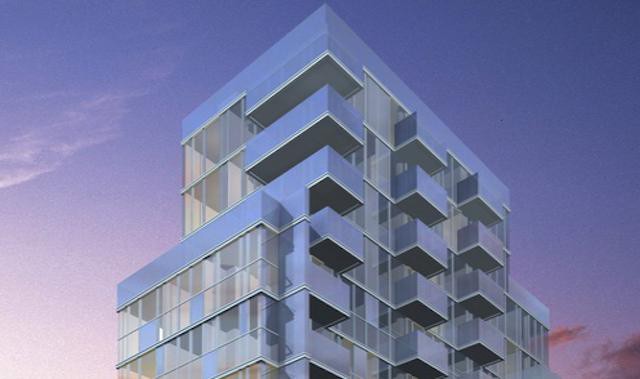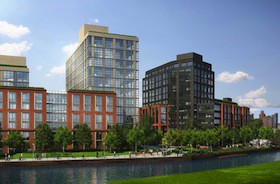The Rich Life of the Urban Space Colonist

Bad news: Neighborhoods are dying and it’s killing us, too:
It’s a new neighbourhood, all right: less physical, less tied to place, smaller and more congenial to those on the inside, more suspicious and unyielding to those outside. What Dunkelman and Pinker want readers and policy-makers to recognize is that downside: What brings us closer to people halfway around the world also makes strangers of those next door. We willingly abandoned the bad, chafing aspect of our old neighbourly ties; we have to somehow learn to maintain the good habits of compromise and personal interaction they also gave us.
Two new books and a slew of studies claim that living lives closed off from neighborly interaction is demonstrably bad for mental health, physical health, and civic health. Terrifying, objectively! And sort of alarmingly comforting, personally. But this largely suburban story brings to mind an urban cousin — a problem that hasn’t yet had a chance to fully express itself, and one I’m not entirely sure exists. But one that I think might, soon. I’m talking about Urban Space Colonies.
Imagine a neighborhood in a major American metropolis. It is inhabited both by people and businesses, but is dense with neither. It is distant but not too distant from this metropolis’s commercial centers. It is physically blighted somehow. Maybe some big abandoned buildings, or a toxic canal. It is, or was, what would be considered depressed; in the view of this metropolis’s most recent ruler, it was seen as underutilized. So it was reconsidered and rezoned. Soon there will be expensive new buildings that will accommodate expensive new people.
These people will be special. They aren’t just affluent, they’re a new kind of affluent. Either they’re simply young and wired into the new privileges of the CYBER WORLD or they work at the companies that supply them. Some of their offices may even move to these neighborhoods, unconstrained by the old commercial order of the city.
Their influence over these neighborhoods, however, will be unexpected. Normally when new people and new money flow into an area, they displace and replace. Here they may do both things differently: These residents live on a different grid than their new neighbors, one that is now invisibly overlaid over certain large urban centers (but not yet over the suburbs). They have their own transportation system; they summon cars in minutes, which will take them everywhere for a price that is objectively high but subjectively low. They receive food in a similar way, freshly prepared and delivered in a bag, or gathered from a warehouse and delivered in a box. Shopping is a silent and stationary activity. The goods come to the shopper, even furniture, not the other way around. Labor, too, can be summoned over these networks: Cleaning, repairs. Entertainment is purely on-demand. Fresh companionship is sought through similar means — flipping through faces, algorithmically matched, all within app-car range.

With their needs and basic desires met, Urban Space Colony residents will demand very different things of their physical surroundings. They won’t need stores, and the ones they want will be novel and luxurious (they will exist as a reminder of shopping, as a diversion, not as a part of the area’s infrastructure). They won’t need restaurants or grocery stores, and the ones they want will be specialized and expensive luxury experiences, meant to be enjoyed in the company of other Colonists. They will want nightlife, and they will want it to be tailored and convenient to them. The physical economy that the presence of an Urban Space Colony creates will be flimsy, minimal, deliberate, and tilted toward leisure. Any “delights” it can not support will be supplied by travel, which Urban Space Colonists enjoy constantly — there are similar sister Colonies all around the country and the world. The area surrounding the Colony may not price out the previous residents directly, in part because the Colonists build tall, but it will not meet their basic needs. It will wither. The Colonists will not be any kind of neighbor; they will not necessarily know each other. There will be, in effect, no remaining neighborhood at all.
In Alfred Bester’s 1956 novel Tiger! Tiger!, the world has been reshaped by a newly discovered human ability to jaunte — instantaneous teleportation by sheer force of will. Work and home may be remote from one another. Your office in Chicago may as well be next to your house in Green Bay. The ultimate display of wealth is to move from one place to another under your own locomotion. It is a novelty.
In Bester’s world this change has consequences for both the ultra-rich and ulta-poor; grift, on both ends of the spectrum, becomes much easier. In the real, near-future version of this scenario, however, shedding physical context is a costly privilege. The summoning is expensive, of course, as are the affected tributes to the old ways (“going to the shop” is now an activity, not a necessity). So is the real estate: This on-demand meta-economy can only exist, for now, where there is a sufficient density of humans and capital. It can exist, for example, in New York.
Images via Curbed
